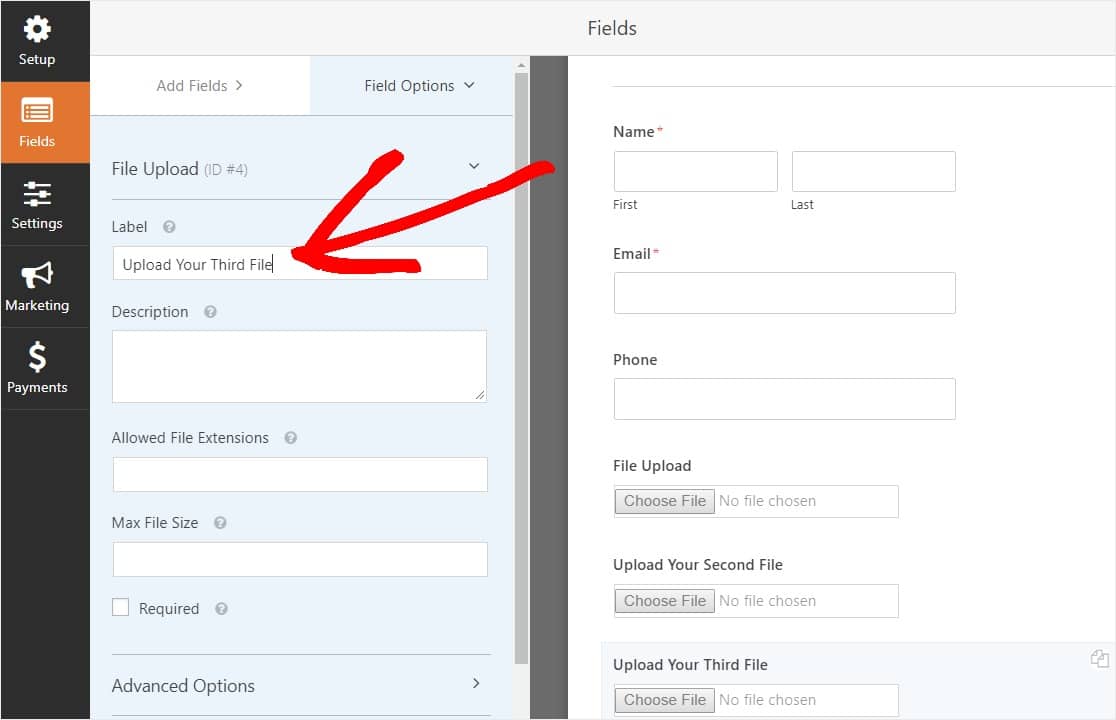

- INPUT FILE UPLOAD EXAMPLE HOW TO
- INPUT FILE UPLOAD EXAMPLE DRIVER
- INPUT FILE UPLOAD EXAMPLE CODE
- INPUT FILE UPLOAD EXAMPLE WINDOWS
ProgressArea = document.querySelector(".progress-area"), const form = document.querySelector("form"),įileInput = document.querySelector(".file-input"), Third, create a JavaScript file with the name of script.js and paste the given codes into your JavaScript file. Second, create a CSS file with the name of style.css and paste the given codes in your CSS file. įile Upload JavaScript with Progress Ba | CodingNepal
INPUT FILE UPLOAD EXAMPLE CODE
If you didn’t understand then you can download the source code files of this File Upload JavaScript with Progress Bar from the given download button.įirst, create an HTML file with the name of index.html and paste the given codes into your HTML file.

Remember, you’ve to create a folder with php name and inside this folder, you’ve to create php file a name of upload.php and a files folder to saved all uploaded files.
INPUT FILE UPLOAD EXAMPLE WINDOWS
AutoIT is a freeware and an open-source automation tool for Windows operating system.
INPUT FILE UPLOAD EXAMPLE DRIVER
After creating these files just paste the following codes into your file. This is the output of the above code (for ) where we can see a message displayed as: File uploaded successfully on uploading the file in selenium web driver using sendKeys method. First, you need to create four Files: HTML, CSS, JavaScript & PHP files. To create this project (File Upload JavaScript). You might like this:įile Upload JavaScript with Progress Bar In the PHP file, I received the file and added the current time before the filename to make the filename dynamic and moved this file to the files folder using PHP inbuilt function move_uploaded_file. As you can have seen on the codes, I used upload property and progress event to get file loaded value and file total size. Inside uploadFile() function, using Ajax I sent the selected file to the PHP.
See the following code : Example : .Using ('input type'file'') is to get the best result. To use change event on input file/upload file using JQuery we can’t use the element id or class name.

The server will receive an array of binary files in the avatar request parameter.In the JavaScript file, I used the change event to get the user selected filename and then called the uploadFile(filename) function with passing the filename as an argument. Answer : Use the input type'file' element. addEventListener ( 'change', ( e ) => // Send XHR reqeust querySelector ( '#avatars' ) // Listen for file selection event Here is an example code that you can use for this purpose: const input = document. images, text, html, video, audio, flash, and objects. It enhances the file input functionality further, by offering support to preview a wide variety of files i.e. Note: If you need more advanced functionalities, check also Drag & drop file upload. Now, we want to make sure that when the user selects a file for upload, it is automatically sent to the server for processing. The plugin allows you a simple way to setup an advanced file picker/upload control built to work specially with Bootstrap CSS3 styles. File Bootstrap File upload / file input File Input is a field which the user can use to upload one or more files (photos, documents or any other file type) from local storage. Let us say you have got the following HTML element: Now that you’ve got the file upload handled on the front end, the next step is to read the data on the server.

INPUT FILE UPLOAD EXAMPLE HOW TO
In this article, you'll learn how to upload single or multiple files using FormData in JavaScript. Keep in mind that trying to upload files using the example will fail as there is no backend that has been configured: See the Pen AJAX File Upload Example by Filestack on CodePen. Once you construct a FormData object, it can be easily sent to the server by using Fetch API, XMLHttpRequest or Axios. It can be used to store key-value pairs representing form fields and their values. The FormData interface is available in all modern browsers as an HTML5 web API.


 0 kommentar(er)
0 kommentar(er)
